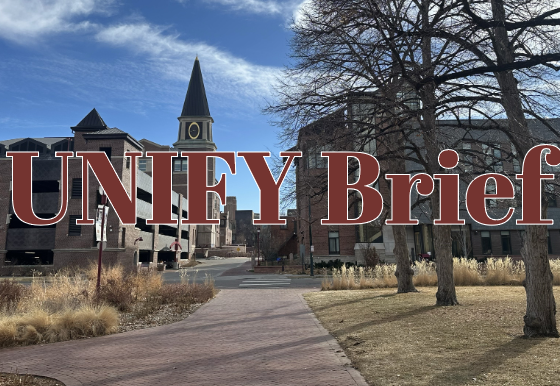Now that spring is here, take a moment to look at the copper roofs and trim all over campus. The darker and duller brown the roof, the older it is. The shinier, the newer.
The copper incorporated into many of the buildings serves as a measurement of not only age but also the air quality in the Denver area. Before it is exposed to heavy precipitation, copper is a pinkish-reddish color as on Nagel Hall.
However, it doesn’t take long for weather to tarnish it into a mixed palette of brown, black, green and blue, which can be observed on the cupola of Olin Hall, for example.
The still bright pinkish copper roof, spire, and gutters of the new Nagel Hall, still under construction, show no signs of weathering yet because the metal has been exposed to rain and snow for only a short time.
“When it rains, it rains carbonic acid as a result of carbon dioxide mixing with water in the atmosphere,” said Tom Westervelt, who holds a doctorate in geology. “The acidic rain dissolves the copper roves and mixes with carbonate in the rain water, forming copper carbonate, which is the brown-black layer that appears on aged copper.”
The brown-black cupola of Olin Hall serves as an example of the effect of acid rain on copper over time. Built in 1997, the building’s roof has endured 11 years of weathering. During that time, a thick layer of copper carbonate formed, giving the roof its dark, dull appearance.
“The water adds a hydroxide element after a longer period of time, which creates a copper carbonate hydroxide, or verdigris, which most people know as green malachite or blue azurite,” Westervelt said.
The Buchtel Memorial Tower is the sole surviving tower of what used to be the Buchtel Chapel, built in 1910. A fire in 1983 destroyed the entire building save this one tower. A thick layer of verdigris in the form of green malachite lies atop browned copper, a result of the chemical reaction between dissolved copper and carbonate in rain water over a period of almost 100 years.
Westervelt said that the more verdigris that forms on copper, the more unhealthy and acidic the atmosphere. Big cities like Denver are prime places for verdigris to form because of the high level of pollution in the air, which then mixes with water and rains down onto buildings, he said.
DU students now have an even greater incentive to cut down on the emission of greenhouses gases: their own health.











